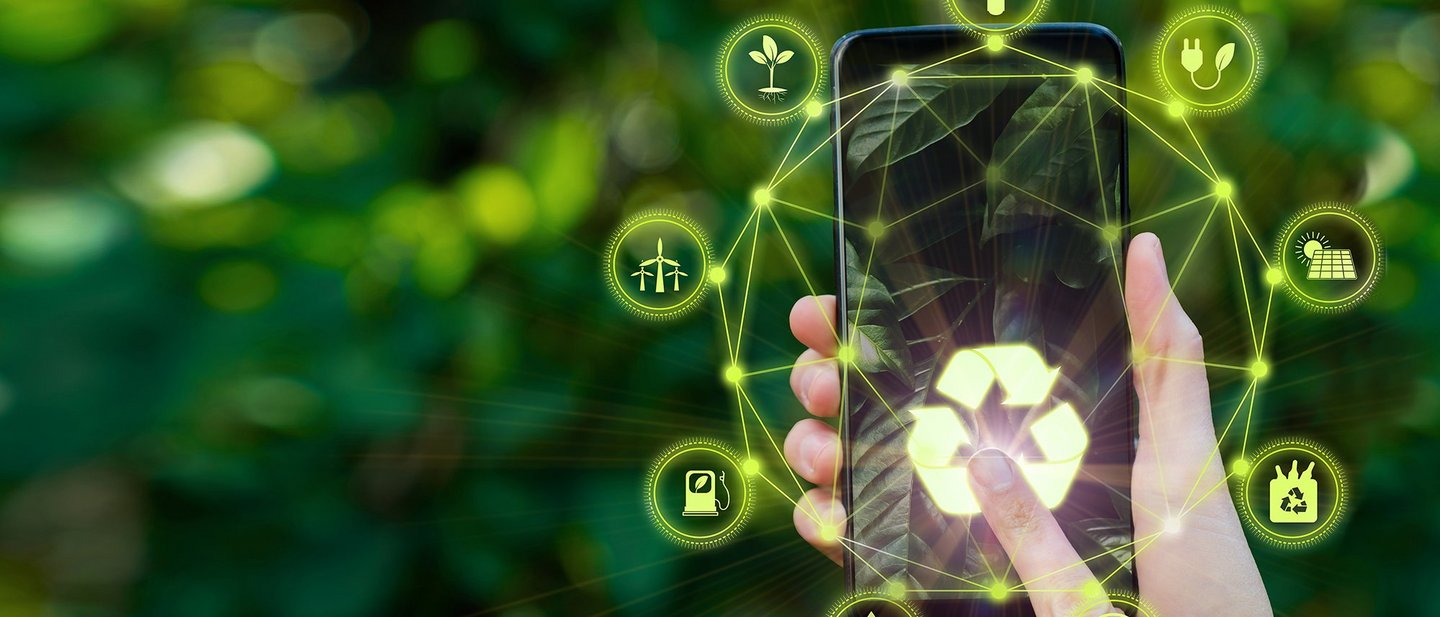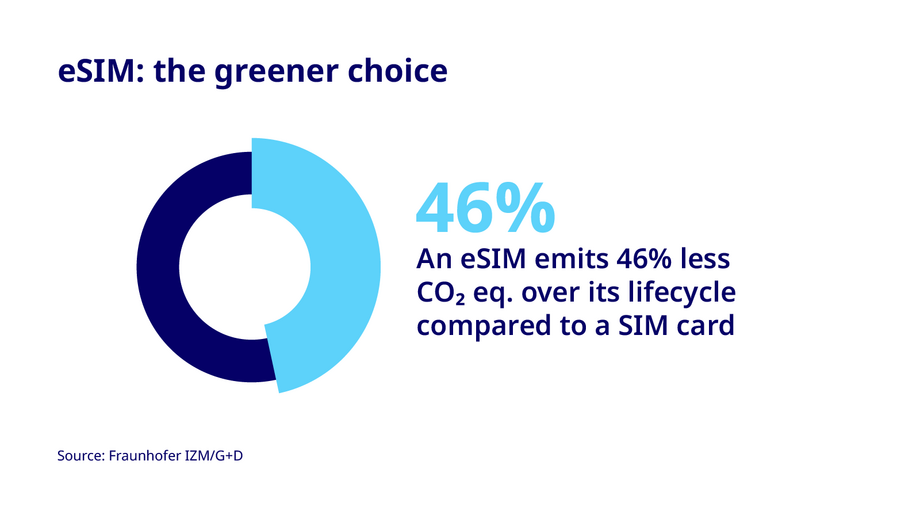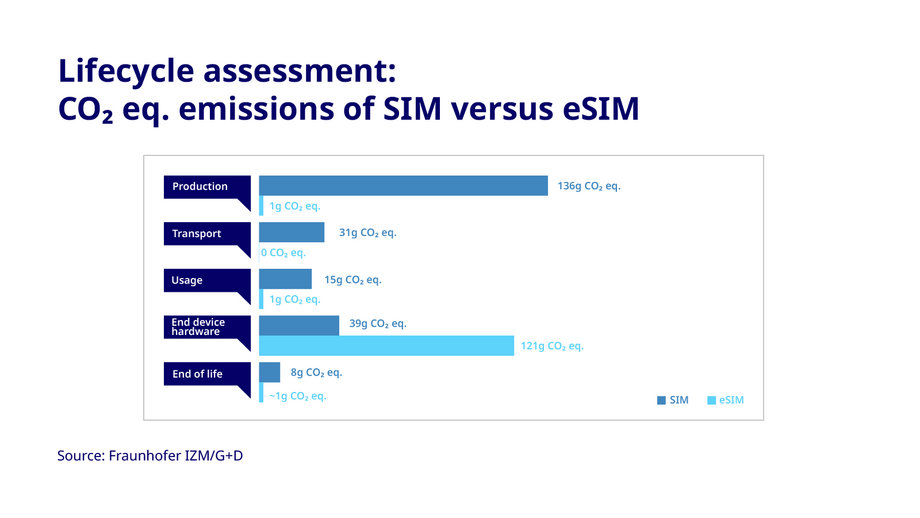G+D has a stated mission to continuously make its product portfolio even more sustainable, with a goal to generate 75% of its revenue from green products by 2040.
Demonstrating that commitment in the area of connected devices, the company recently commissioned Fraunhofer IZM, the renowned applied and industrial contract research institute, to undertake an independent life cycle assessment that compared the environmental impact of pluggable SIM cards with that of eSIMs, the fully digital equivalents that are now embedded in over a billion connected devices, from smartphones to connected cars.1 To ensure impartiality, the research results also were reviewed by an external panel.
Comparing the environmental impact of these two formats is not an insignificant task. The manufacturing processes, logistics, associated services, and disposal practices all differ considerably, and have to be provided by a number of companies across a broad ecosystem.
In the case of G+D SIM cards, the smart cards (that will hold the unique data used to identify and authenticate a mobile subscriber) are manufactured at the company’s advanced production facilities using ABS or recycled-PVC plastics, before they enter the complex supply chains of mobile network operators. With eSIMs, service partners such as G+D enable the management of virtual profiles, including their provisioning to a customer’s device.





